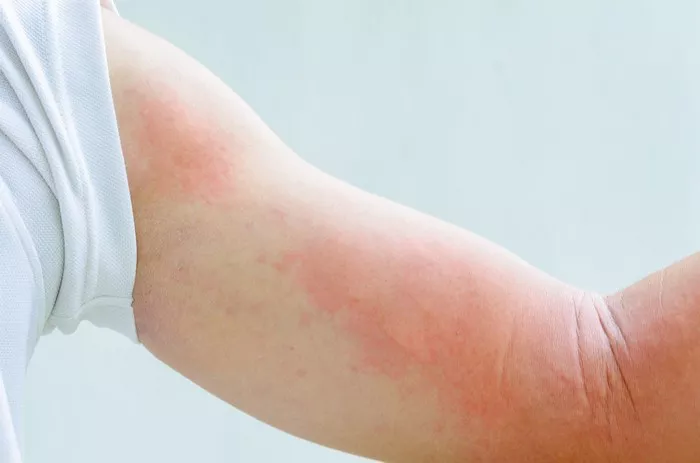Hives, also known as urticaria, are raised, itchy welts on the skin. They can appear anywhere on the body. Stress is one of the triggers that can cause hives. In this article, we will explore what stress-induced hives look like, their causes, symptoms, and treatment options.
Understanding Hives
What Are Hives?
Hives are a skin reaction that occurs when the body releases histamine and other chemicals. This reaction leads to swelling and redness. Hives can vary in size and shape. They can appear as small bumps or larger welts.
Types of Hives
Hives can be classified into two main types:
Acute Hives: These last less than six weeks and often resolve quickly. Acute hives can be caused by allergens, medications, or infections.
Chronic Hives: These last longer than six weeks. Chronic hives may not have a clear cause and can be associated with underlying health issues.
How Stress Triggers Hives
The Connection Between Stress and Hives
Stress can lead to hives due to the body’s fight-or-flight response. When stressed, the body releases hormones like cortisol and adrenaline. These hormones can increase blood flow and stimulate the immune system. This response may lead to the release of histamine, resulting in hives.
Other Triggers of Hives
While stress is a common trigger, other factors can also lead to hives:
Allergic Reactions: Foods, medications, and insect bites can trigger hives.
Infections: Viral or bacterial infections can lead to skin reactions.
Environmental Factors: Extreme temperatures, sunlight, or pressure on the skin can cause hives.
Characteristics of Stress-Induced Hives
Appearance
Stress-induced hives can vary in appearance. Here are some common characteristics:
Color: Hives are often red or pink. They may appear pale in the center with red edges.
Size: Hives can range from small dots to large welts. Some can grow as big as a few inches across.
Shape: Hives can be round, oval, or irregularly shaped. They may merge together to form larger patches.
Texture: Hives are raised above the surrounding skin. The surface may be smooth or bumpy.
Location
Stress-induced hives can appear anywhere on the body. Common areas include:
Arms and Legs: Many people notice hives on their extremities.
Face and Neck: Hives may appear on the face, especially around the eyes and mouth.
Torso: Hives can also show up on the chest and back.
Itching and Discomfort
One of the most distressing symptoms of hives is itching. The itchy sensation can range from mild to severe. Scratching the hives may worsen the condition and lead to skin damage.
How to Identify Stress-Induced Hives
Symptoms to Look For
When trying to determine if you have stress-induced hives, consider the following symptoms:
Itching: A persistent itch is usually present.
Swelling: Hives may be accompanied by swelling in the surrounding skin.
Fluctuation: Hives can come and go. They may appear suddenly and then disappear within hours.
Changes with Stress Levels: If you notice an increase in hives during stressful situations, stress may be a trigger.
When to Seek Medical Help
Most cases of hives are not serious and can be managed at home. However, seek medical attention if you experience:
Difficulty Breathing: This could indicate a severe allergic reaction.
Swelling of the Face or Throat: This can also be a sign of an allergic reaction.
Symptoms Lasting More Than Six Weeks: Chronic hives may require further investigation.
Diagnosing Stress-Induced Hives
Medical Evaluation
To diagnose stress-induced hives, a healthcare provider will conduct a thorough evaluation. This may include:
Medical History: Discussing your symptoms, stress levels, and any recent changes in your life.
Physical Examination: The doctor will examine your skin and look for patterns in the hives.
Allergy Testing: If allergies are suspected, skin or blood tests may be conducted.
Identifying Triggers
Keeping a journal of your symptoms can help identify triggers. Note when hives occur, your stress levels, and any potential allergens.
Treatment Options for Stress-Induced Hives
Over-the-Counter Treatments
Many people find relief from stress-induced hives with over-the-counter medications:
Antihistamines: These medications block the effects of histamine. Common options include diphenhydramine (Benadryl) and cetirizine (Zyrtec).
Topical Creams: Hydrocortisone cream can help reduce itching and inflammation.
Prescription Medications
If over-the-counter treatments are not effective, a doctor may prescribe stronger medications:
Oral Corticosteroids: These can reduce inflammation and relieve symptoms.
Antihistamines with Sedative Effects: These may help with severe itching and promote sleep.
Stress Management Techniques
Managing stress is crucial for preventing stress-induced hives. Consider incorporating the following techniques into your routine:
Relaxation Exercises: Deep breathing, meditation, and yoga can help reduce stress levels.
Regular Exercise: Physical activity can improve mood and decrease stress.
Adequate Sleep: Ensure you get enough sleep to help your body cope with stress.
Avoiding Triggers
Identifying and avoiding triggers can help manage hives. Consider these tips:
Stay Hydrated: Drinking plenty of water can support skin health.
Limit Known Allergens: If you have known allergies, try to avoid exposure to these triggers.
Monitor Stress Levels: Be aware of your stressors and seek support when needed.
Home Remedies for Hives
While medical treatments are often effective, some home remedies may help alleviate symptoms:
Cool Compresses: Applying a cool, damp cloth to the affected area can soothe itching and reduce inflammation.
Oatmeal Baths: Soaking in an oatmeal bath can help calm irritated skin.
Aloe Vera: This natural remedy may help soothe and heal the skin.
Conclusion
Stress-induced hives can be uncomfortable and distressing. Understanding what they look like and how to manage them is essential for those affected. By identifying triggers and incorporating stress management techniques, individuals can reduce the occurrence of hives. If symptoms persist or worsen, seeking medical advice is crucial to rule out any underlying conditions. Remember, while stress can trigger hives, effective treatments and lifestyle changes can help you regain control over your skin health.
Related topics:


























